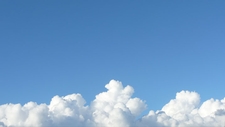States of Matter

TEKS Objective
The student is expected to measure, compare, and contrast physical properties of matter, including size, mass, volume, states (solid, liquid, gas), temperature, magnetism, and the ability to sink or float.
Essential Understanding
The student knows that matter has physical properties and those properties determine how matter is classified, changed and used.
Science Background
States of Matter: Purdue University (website) - Animations and descriptions of the primary three states of matter: gas, liquid, and solid.
States of Matter
Purdue University, www.chem.purdue.edu
States of Matter: Oracle ThinkQuest (website) - Description of gases, liquids and solids.
States of Matter
Oracle ThinkQuest, www.library.thinkquest.org
Signature Lesson
From Gas to Liquid to Solid: American Chemistry Society (website) - Activity in which students observe liquid water changing state to freeze and become ice.
From Gas to Liquid to Solid
American Chemistry Society, www.inquiryinaction.org
- Supporting Lessons
- Extensions
- Assessment Ideas
- Literature Connections
- Related
TEKS - Additional Resources
Supporting Lessons
States of Matter: Ohio State University (PDF) - Students investigate, compare and contrast the three states of matter (solids, liquids and gases), and learn that each state has distinct physical properties.
States of Matter
Ohio State University, http://gk-12.osu.edu
Elaboration Lessons and Extensions
States of Matter Unit: Morton (IL) District 709 (PDF) - Extensive, two-three week unit on the properties of matter.
States of Matter Unit
Morton (IL) District 709, http://webs.morton709.org
Assessment Ideas
Have students create a three-column table listing the characteristics of gases, liquids and solids.
Literature Connections
Investigating Matter. Walker, Sally (ISBN: 978-0761378754)
Matter. Wilkin, Fred (ISBN: 978-0516012841)
Matter: See It, Touch It, Taste It, Smell It. Stille, Darlene (978-1404803442)
Matter. Walker, Sally (ISBN: 978-0822528449)
Additional Resources
States of Matter: Super Teacher Ideas (website) - Lessons, activities and demonstrations related to matter.
States of Matter
Superteacherideas, www.superteacherideas.com
TEKS Navigation
Grade 4
Need Assistance?
If you need help or have a question please use the links below to help resolve your problem.

Comments
The states of matter card game is not working. Is anyone else having this issue?
Thanks for letting us know, it's fixed now.